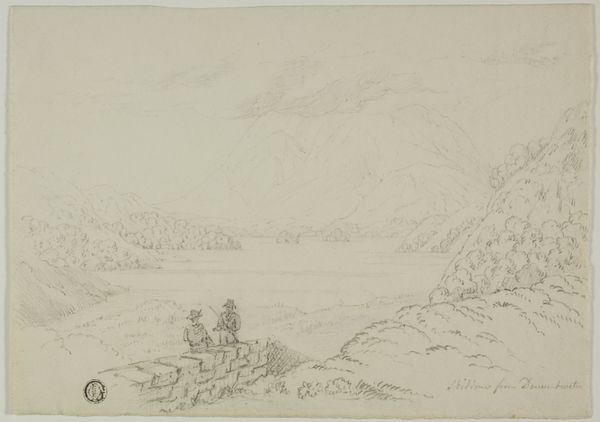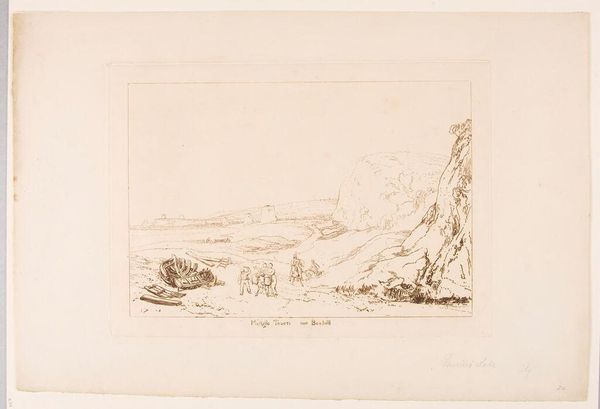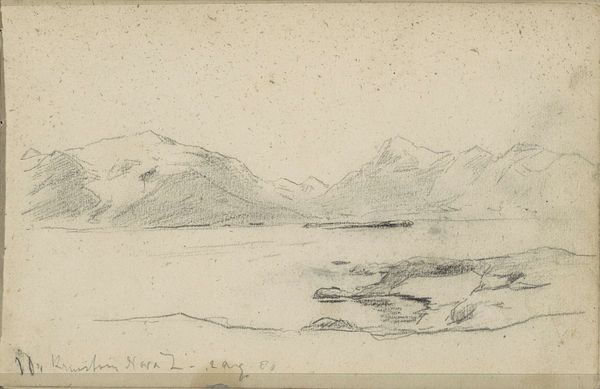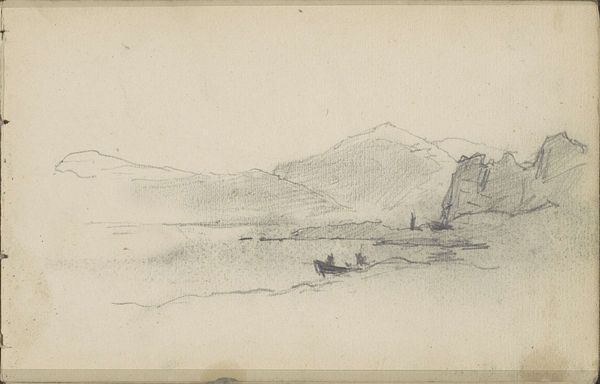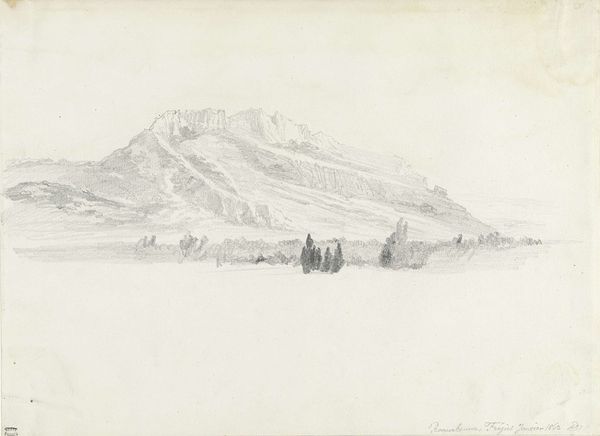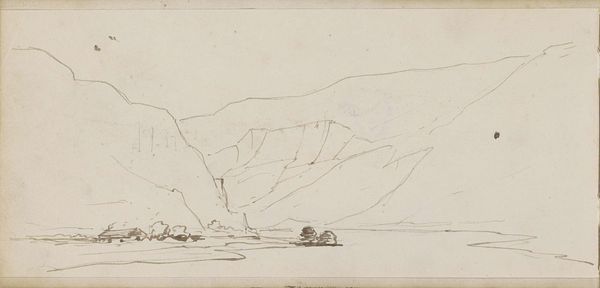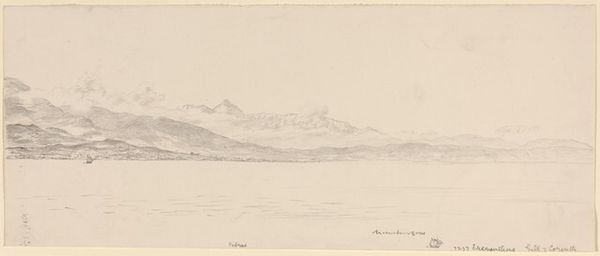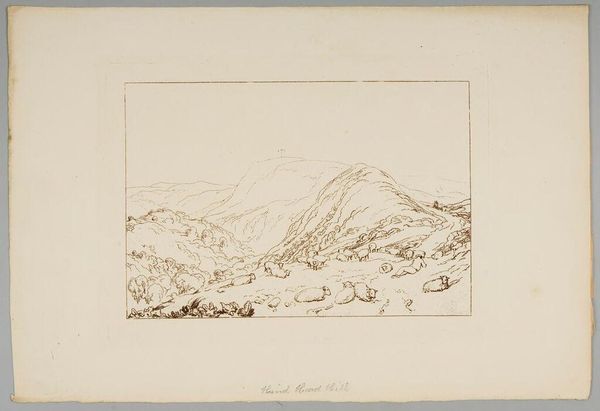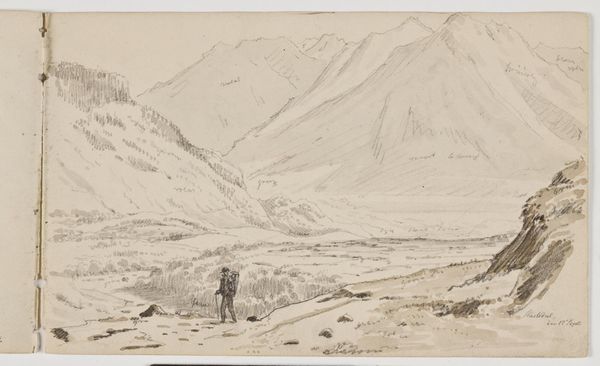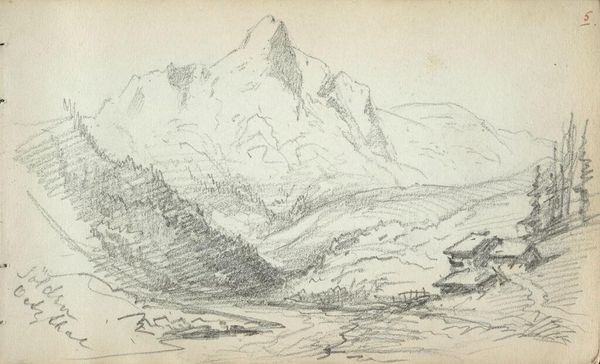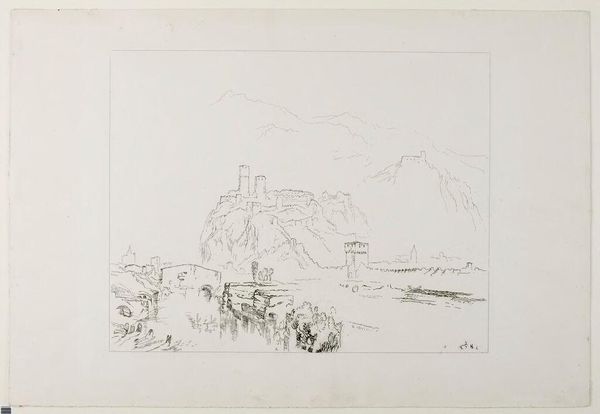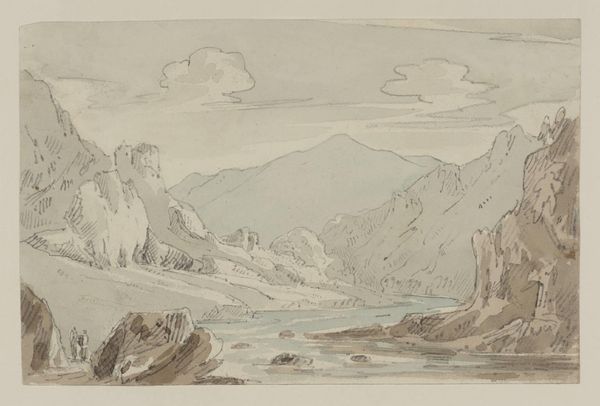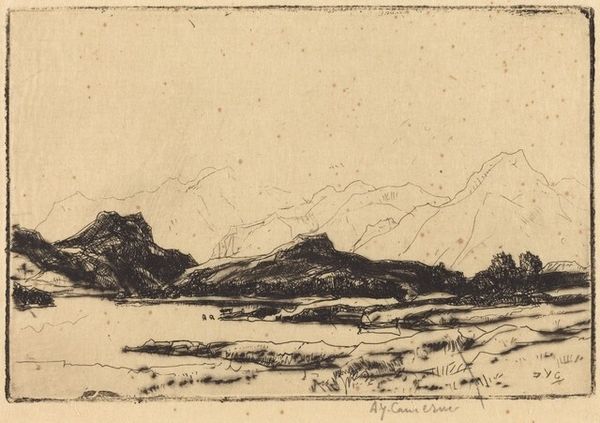
Copyright: CC0 1.0
Curator: This is J.M.W. Turner’s “Lake of Thun,” held here at the Harvard Art Museums. The sepia ink creates such a delicate sensibility across the landscape. Editor: It evokes a melancholic mood. The muted tones, with their subtle gradations, almost whisper of impermanence, don't you think? Curator: Absolutely. The composition draws the eye into the central void between the mountains, framing a narrative of labor along the shore. Note how Turner uses line to define depth. Editor: The people, struggling to move goods, underscore the human cost of trade and expansion during Turner’s era. It speaks volumes about class and societal structures. Curator: The texture rendered only through line weight, the balance achieved by the placement of figures, is quite masterful. Editor: Yes, and those figures reveal the hard realities behind the picturesque view, and are a reminder to look beyond superficial beauty. Curator: Precisely! An interesting dialogue, revealing how we can both appreciate the artist's technique and historical implications embedded in the work. Editor: Indeed. Art invites these multiple interpretations, and hopefully, encourages a deeper understanding of the past and the present.
Comments
No comments
Be the first to comment and join the conversation on the ultimate creative platform.

